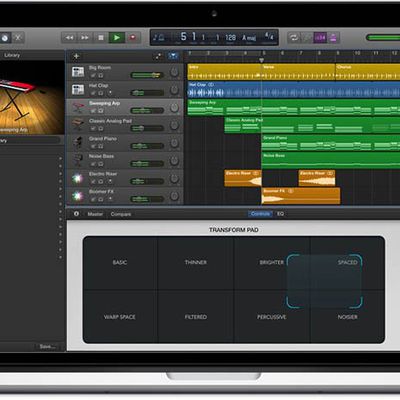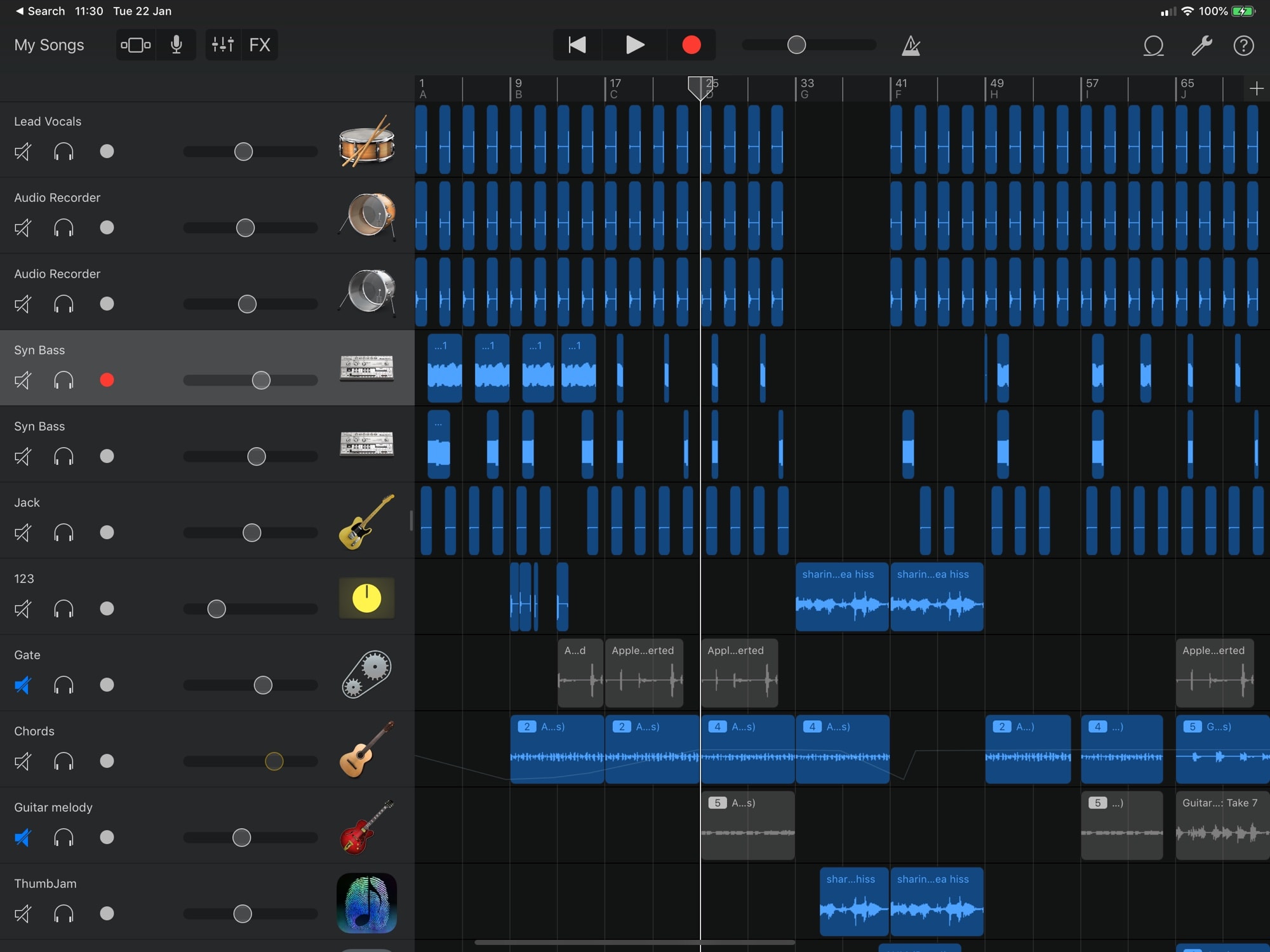- Nov 29, 2018 When you download GarageBand on your Mac, it will come with a basic starter pack composed of 50 sounds, 500 loops, 1 drummer, and 2 basic lessons for guitar and piano.
- After you install GarageBand on your computer, additional content—including patches, drummers, and Apple Loops—may be available. Some additional content may be needed to perform certain tasks. In these instances, a dialog appears, informing you that additional content is needed, and asking if you want to download it.
Hi, Robert.
GarageBand is basically a simple version of its big brother that allows you to record instruments and vocals on your Mac. Depending on the application, you need a microphone, midi keyboard or mixer to receive an optimal audio signal in GarageBand or Logic Pro X. When you download GarageBand on your Mac, it will come with a basic starter pack composed of 50 sounds, 500 loops, 1 drummer, and 2 basic lessons for guitar and piano.
Thanks for the question! I see you are interested in a new MacBook Air and have questions about the compatibility of Garageband. The basic MacBook Air configuration starts at 1.6GHz dual-core Intel Core i5 with 4 GB of RAM and is configurable up to 2.2GHz dual-core Intel Core i7 with 8 GB RAM. These configurations do meet the minimum system requirements for the most current version of Garageband.
Garageband Macbook Air Tutorial
GarageBand 10.0
- OS X Mavericks
- Mac with Intel Core 2 Duo, Core i3, Core i5, Core i7, or Xeon processor
- Recommended: 4 GB RAM with i3 processor (or faster)
Keep in mind that configuring a system with more RAM and a faster processor can increase system performance.
I hope this information helps and thank you for visiting Apple Support Communities.
Cheers

Jan 13, 2016 9:09 AM
Apple’s recent move of offering GarageBand, along with other apps from its iLife and iWork suites, for free has sent Mac users scrambling to get their hands on the massively popular digital audio workstation program. If you don’t have it on your computer yet, here’s your chance to download GarageBand on Your Mac for free.

Before you proceed, please note that the navigation menu may vary depending on the version of your Mac’s operating system. Also, depending on the GarageBand version, you may need more or less 4 GB of available RAM to install the app.
To download GarageBand on your Mac from the Mac App Store.
- Go to your “Dock” located at the bottom part of your screen.
- Look for the App Store icon.
- Open the Mac App Store by double clicking on it.
- Use the App Store’s search function to find GarageBand.
- Once you’ve found it, click on the button beside it. Depending on your Mac’s OS version, the button may say “Get” or “Buy” (GarageBand is now offered to all Mac users as a free download, but if you want to be sure, check if there’s either a “Free” notice or no price listed beside the app).
- After clicking the button, the prompt may change from “Get” or “Buy” to “Install App.”
- Click “Install App.”
- Provide your Apple account ID and password when prompted.
- Click “Sign In.”
- Wait for the app to finish installing.
- Once the app has been installed, you can find it on your Mac’s “Launchpad,” your “Applications” folder, or by using the “Finder” to search for it.
- You are now ready to use GarageBand.
How to Download GarageBand Sounds
When you download GarageBand on your Mac, it will come with a basic starter pack composed of 50 sounds, 500 loops, 1 drummer, and 2 basic lessons for guitar and piano. This should be enough while you’re still experimenting with the app, but should you want additional options to choose from, you can expand your GarageBand library by paying for a one-time in-app purchase priced at $4.99.
To download additional GarageBand sounds,
- Open GarageBand.
- Choose “Sound Library.”
- Download “All Available Sounds.”
- Click “Get.”
(The contents of the expanded pack can eat up another GB of RAM or so, so you might want to check if you still have enough space left before you proceed with the download.)
How to Download GarageBand Lessons
In addition to downloading more sounds for your mixes, you can also download additional “Learn to Play” lessons that you can use for practice.

To download additional GarageBand lessons,

- Open GarageBand.
- Select “File.”
- Click on “New.”
- Look for “Project Chooser.”
- Select “Lesson Store.”
- Choose from the available lesson options.
- Highlight the thumbnail of the lesson or lessons that you wish to download.
- Click “Download.”
- Wait for the files to finish downloading.
- Once the files have finished downloading, open the lesson that you want to use for practice by double clicking on it.
How to Download GarageBand Artist Lessons
Aside from the regular “Learn to Play” lessons, GarageBand also offers Artist Lessons where your favorite musicians teach you how to play the guitar or piano through a series of pre-recorded video tutorials priced at $5 each.
To buy an Artist Lesson for GarageBand,
- Open GarageBand.
- Select “File.”
- Click on “New.”
- Look for “Project Chooser.”
- Select “Lesson Store.”
- Click on “Artist Lessons.”
- Choose from the available lesson options.
- To see a preview of the lesson, click on the thumbnail of the lesson that you are interested in.
- Click on the “Play” button.
- Once you’re satisfied with the preview, click on the “Buy Now” button.
- If you’re already signed in to the Lesson Store, your lesson will automatically start downloading. Otherwise, you will be asked to sign in first.
- Wait for the lesson to finish downloading.
- Once the lesson has been downloaded, open the lesson you want to use for practice by double clicking on it.
Using Audio Unit Plugins with GarageBand
If you are still feeling a little unsatisfied with your GarageBand app’s current library or you just want to add as many options as possible in one go so that you don’t have to keep going back to download a few more stuff in the future, you can expand your GarageBand library even further by downloading Audio Unit plugins.
Audio unit plugins are like apps that allow your Mac to add sound effects to your GarageBand project such as reverberations, compressions, and vibrato to cite some examples. They can also be used to produce the sounds that common musical instruments such as organizers, synthesizers, and organs make.
Some audio unit plugins come pre-installed with your Mac, but you can also download additional audio unit plugins from third-party vendors. You can find a quick list of audio unit plugins including some of their basic features in this Tech Radar review.
Additional Notes:
Macbook Air 2020 Garageband
- When you download GarageBand, you are only downloading it for the specific device that you were using when you initiated the download, so even if you already have GarageBand on your iPhone or iPad, you still have to download GarageBand on your Mac to be able to use it on your laptop.
- While there are plenty of audio unit plugins available for download from third-party vendors, please be aware that not all of them may work with your Mac. If you’re having difficulties getting a third-party unit plugin to work with your Mac, please get in touch with the official Apple Support forums so that they can give you technical specifications and troubleshooting instructions specific to your Mac model.
